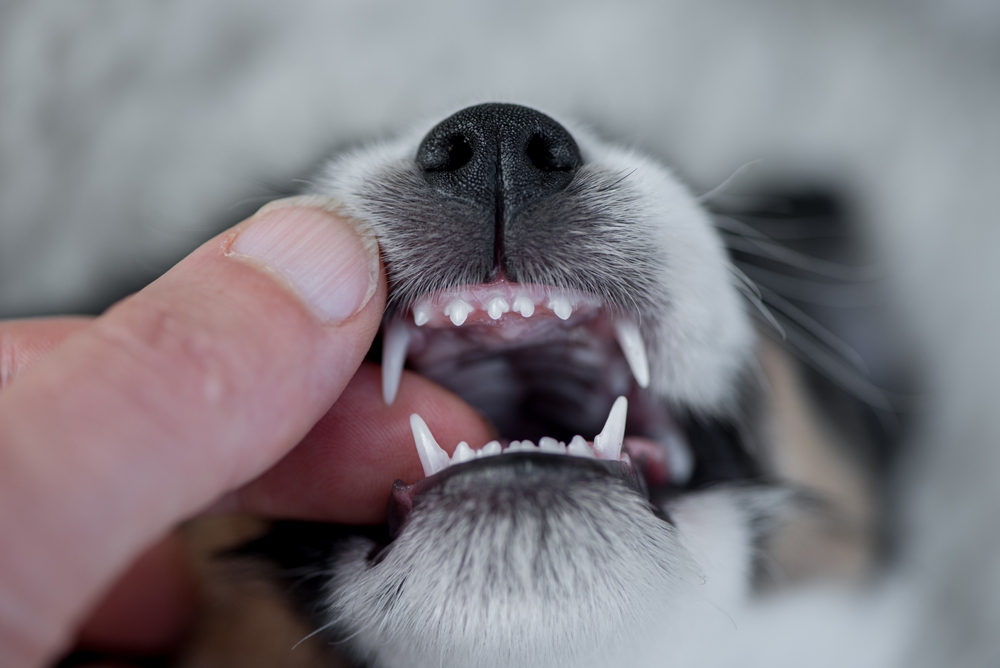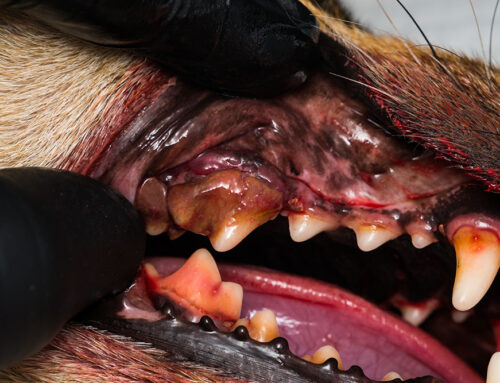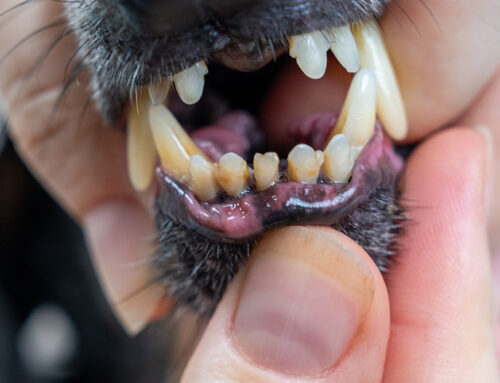Dog and cat dentition develops similarly to humans—they are born without teeth, and a temporary baby set erupts shortly after birth. As adolescents, the permanent adult teeth erupt and the baby teeth fall out. The process sounds simple but is actually rather complex, and problems can occur with a pet’s teeth during this period. The North Bay Veterinary Dentistry team recognizes the importance of starting a puppy or kitten on the right track to a lifetime of dental health. Here is our guide to a common baby tooth problem—retained deciduous teeth—in dogs and cats.
Primary versus secondary teeth in pets
Like people, dogs and cats have two sets of teeth—a primary set (i.e., deciduous or baby teeth) and a secondary set (i.e., adult or permanent teeth). Dogs have 28 baby teeth and 42 adult teeth, while cats have 26 baby teeth and 30 adult teeth. The baby teeth, which are thinner, smaller, and often sharper versions of the adult teeth, erupt at around 3 to 4 weeks of age. Then, the adult teeth begin erupting when the puppy or kitten is between 3 and 7 months old. The adult teeth put pressure on the baby tooth roots and they resorb (i.e., dissolve). When enough of the root structure is gone, the baby tooth falls out, and the permanent tooth moves into place.
What are retained deciduous teeth in pets?
The baby teeth do not always fall out as expected. Researchers still aren’t sure exactly what triggers this process, so they also do not know why this occurs in some pets. A baby tooth that stays in place, despite an adult tooth erupting nearby, is called a retained or persistent deciduous tooth and is a common problem in toy and small-breed dogs. Cats and large dogs don’t typically have this problem. The most commonly retained teeth are the deciduous canines (i.e., “fang” teeth) and incisors (i.e., front teeth).
Problems associated with retained deciduous teeth in pets
So, what’s the big deal if your pet has a few extra teeth? Unfortunately, retained deciduous teeth can cause major issues inside your furry pal’s mouth, including:
- Periodontal disease — Teeth crowded closely next to each other will trap plaque and bacteria, leading to the rapid development of periodontal disease and potentially damaging nearby teeth.
- Malocclusion — A condition called malocclusion occurs when a retained baby tooth pushes the adult tooth out of its normal position. The malpositioned tooth can rub abnormally against other teeth, or cause painful trauma to the gums or palate. Severe palatal trauma can lead to a hole between the mouth and sinuses, and chronic infections.
Treating retained deciduous teeth in pets
Surgical extraction is the ideal treatment for retained deciduous teeth. If the timing is right, your primary veterinarian may be able to perform this procedure at the same time as your pet’s spay or neuter surgery. Your pet must be anesthetized whether one tooth or multiple teeth are removed. Your veterinarian will work carefully to avoid damaging the nearby adult tooth.
Early intervention for deciduous tooth pathology in pets

The longer a persistent deciduous tooth remains in place, the more likely that tooth will push the adult tooth out of normal position. Waiting to see if the tooth falls out on its own is not ideal. Instead, your veterinarian should remove retained teeth as soon as the adult teeth begin to appear to provide the adult tooth with the best chance of moving to a normal position.
The same rule applies to other deciduous tooth pathology, such as fractures or existing malocclusions. Although baby teeth are temporary, a fracture can allow infection deep in the root, which may affect the adult tooth’s development. Likewise, our team can provide orthodontic treatment to reposition poorly aligned baby teeth. Early intervention is always best to ensure your puppy or kitten develops the healthiest set of adult teeth possible.
Because puppies and kittens grow and change rapidly during their first few months, the North Bay Veterinary Dentistry team recommends frequent check-ups with your primary veterinarian during this time so that dental problems can be detected and retained baby teeth extracted as early as possible. Your primary veterinarian is well-qualified to handle basic dental extractions. but our team is here to help puppies and kittens with complex cases or malocclusions. Contact us to schedule a visit or to learn more about our specialty dental services for pets.






Leave A Comment